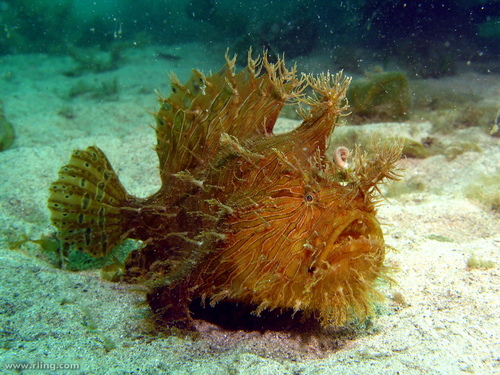
Striated Frogfish
The Bluefin Tuna (Thunnus thynnus) is a majestic and powerful fish, renowned for its incredible size, speed, and endurance. It plays a critical role in marine ecosystems and holds significant cultural and economic value, particularly in culinary traditions worldwide.
2 5 years
Lifespan
22 cm
Length
Least Concern
Conservation Status
6 km/h
Swimming speed
Carnivorous
Diet
Sedentary
Migration
Appearance Overview
The Bluefin Tuna is renowned for its large, streamlined body, built for speed and endurance.
Color
Dark metallic blue on top with a silvery underside
Fins
Two dorsal fins, the first depressible into a groove
Body Shape
Torpedo-shaped, designed for efficient swimming
Length
up to 10 feet (3 meters)
Weight
up to 1,500 lbs (680 kg)
Diet
Carnivorous, feeding on fish, squid, and crustaceans
Feeding Behavior
Uses speed to chase down prey, sometimes in coordinated schools
Social Behavior
Solitary, migratory
Commercial Relevance
High value in sushi markets
Conservation measures
Fishing quotas, marine protected areas
Status
Endangered
Threats
Overfishing, climate change, habitat loss
Habitat Distribution
Depth Range
0-900 meters
Geographic Range
Atlantic Ocean, Pacific Ocean, Mediterranean Sea
Preferred Environment
Temperate waters, open ocean
Reproduction and Life Cycle
Breeding Habits
Spawns in warm waters, often near the Gulf of Mexico and the Mediterranean Sea
Development Stages
Larvae hatch in plankton-rich waters and grow rapidly
Fecundity
Females can produce millions of eggs per season
Maturity Age
Matures at 4-8 years
Faqs about Striated Frogfish
Where can Bluefin tuna be found?
Bluefin tuna are primarily found in the Atlantic and Pacific Oceans.
How long do Bluefin tuna live?
They can live up to 40 years.
Are Bluefin tuna used for food?
Yes, they are highly valued for their meat, especially in sushi and sashimi.
How fast can Bluefin tuna swim?
They are among the fastest swimmers in the ocean, capable of short bursts of high speed.
What is the biggest threat to Bluefin tuna?
The biggest threat is overfishing, driven by high demand for their meat.
What makes Bluefin tuna unique in appearance?
They have a streamlined, torpedo-shaped body that helps them swim efficiently.
What is the diet of a Bluefin tuna?
They primarily eat fish, squid, and crustaceans.
Do Bluefin tuna migrate?
Bluefin tuna migrate across oceans for feeding and spawning.
When do Bluefin tuna reach maturity?
They reach maturity around 4-8 years of age.
What conservation efforts are in place for Bluefin tuna?
Conservation efforts include fishing quotas, size limits, and protected areas.
Copyright @ Nature Style Limited. All Rights Reserved.
 English
English